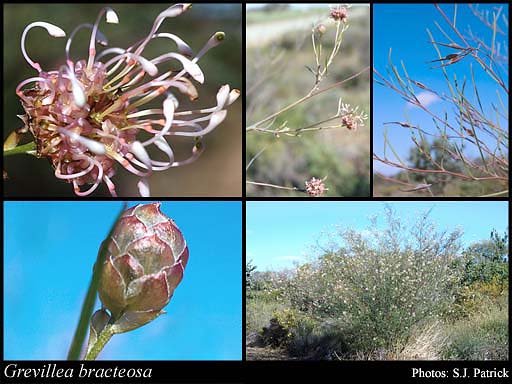- Reference
- Lehm., Pl.Preiss. [J.G.C.Lehmann] 2:254 (1848)
- Conservation Code
- Not threatened
- Naturalised Status
- Native to Western Australia
- Name Status
- Current
Open, non-lignotuberous shrub, 0.5-2 m high. Fl. pink & purple & white, Aug to Oct or Dec. Sand, gravelly sand, gravelly clay.







Scientific Description
Shrubs, 1-2 m high; branchlets hairy, not glaucous. Leaves alternate, 50-210 mm long, 1-2 mm wide, hairy or glabrous; lamina flat, more or less the same width throughout, entire, the margins revolute, enclosing the lower surface of the leaf blade, forming a groove either side of the midvein. Inflorescences axillary or terminal, green or pink; pedicels 3-4 mm long. Perianth 5-8 mm long; tepals all free after flower opens, glabrous; ovary glabrous, stipitate, the stipe 4-6 mm long; pistil 12-17 mm long, white or pink, pollen presenter lateral, style glabrous. Follicles glabrous, not viscid, dehiscent, 12-20 mm long. Flowers in August, September or October. Occurs in the South-west (SW) Botanical Province(s), in the Geraldton Sandplains (GS), Avon Wheatbelt (AW) or Jarrah Forest (JF) IBRA subregion(s). : Conservation code Declared Rare (R).
Distribution
- IBRA Regions
- Avon Wheatbelt, Geraldton Sandplains, Jarrah Forest.
- IBRA Subregions
- Geraldton Hills, Katanning, Lesueur Sandplain, Merredin, Northern Jarrah Forest.
- Local Government Areas (LGAs)
- Chapman Valley, Chittering, Dalwallinu, Greater Geraldton, Moora, Morawa, Northampton, Toodyay, Victoria Plains.